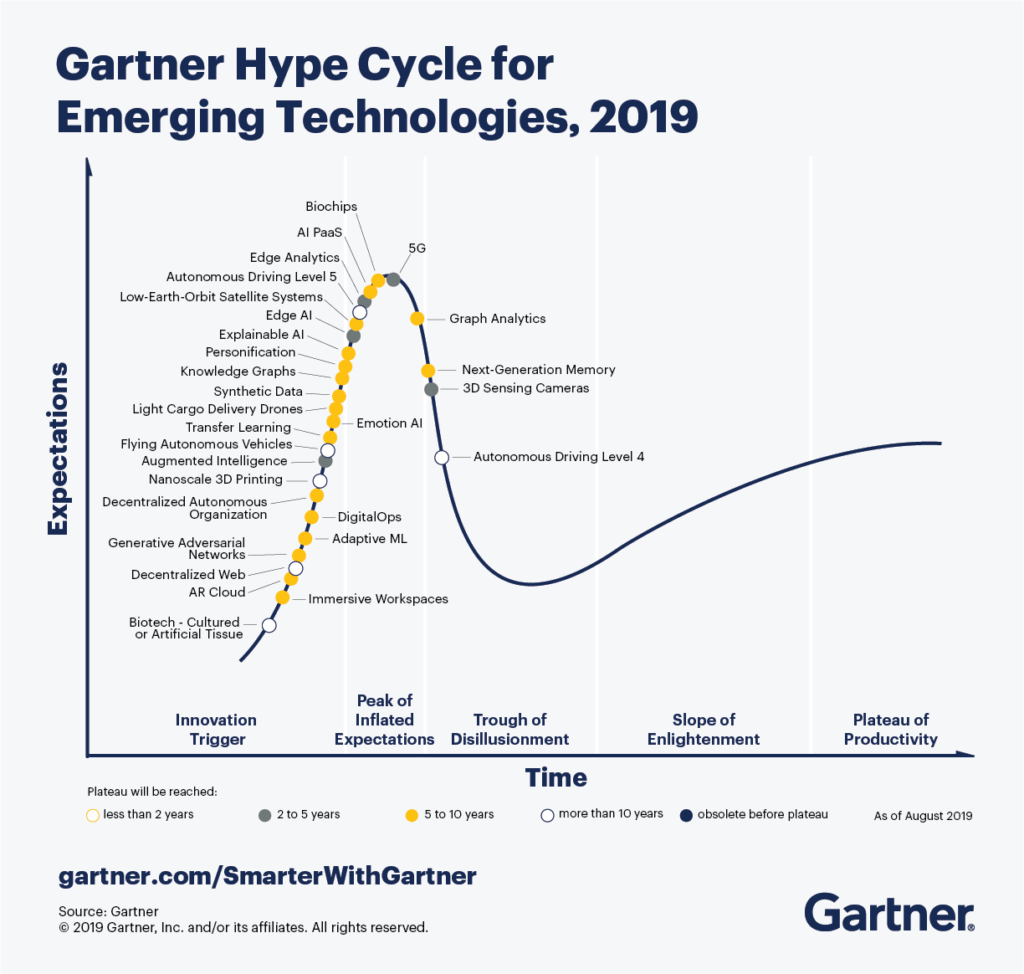A few weeks ago, I was driving to my remote farm in California. Several miles down the dirt road, I came upon a disabled UPS truck. I asked the driver if he needed any help. He said he had a flat tire and was waiting for a tow truck. As I was about to take off, he said, “Wait, let me give you your package!”
He handed me a lightweight padded envelope. I ripped the top off and pulled out a single roll of Teflon tape. We looked at the tape, then looked at each other and burst out laughing at the absurdity of the situation. That was his only delivery in the area that day.
When you combine the handling, driver time, overhead costs, and truck repairs, that delivery probably cost about 1,000 times the value of the item being delivered. Sure, I felt bad about this particular delivery. But social and environmental issues aside, what happened from 2010 to 2020 that made online shopping a guilt-free on-demand experience? It’s simple: Automation.
The logistics arms race
This concept didn’t exist prior to 2010. In the early 2000s, e-commerce was growing quickly, but mostly linearly. Consumers shopped online for some things, but the convenience of in-store shopping still won out most of the time. The absurd idea that products could be shipped for free from anywhere to anywhere in one or two days — and returned for free — became the expectation over the course of the decade. Thank you, Zappos!
Amazon’s acquisition of Kiva Systems in 2012 set off a logistics arms race, as retailer after retailer realized that logistics wasn’t just a cost center, but also a key competitive advantage. Convenience drives everything.
Toward the end of the decade, we saw a number of big names jump on the technology investment bandwagon. In 2016, Walmart bought Jet.com for $3.3 billion.
In 2018, Target bought Ship’t for $550 million to roll out same-day delivery. UPS announced a plan to invest $12 billion to expand its logistics network and an additional $7 billion in “new aircraft, new ground vehicles, and IT platform improvements.”
The trend continues — just this fall, Shopify announced its acquisition of 6 River Systems for $450 million, and DHL announced $2.2 billion tech upgrade plan to increase its use of warehouse automation and robotics.
Behind the sensational headlines, there were many years of hard work. The high-profile application of Kiva’s grid-traversing robots gave rise to Gartner’s “inflated expectations” of the early 2010s, causing innovators and investors alike to struggle to provide solutions with concrete process improvement.

What we were trying to do was not exactly easy. E-commerce is fundamentally a difficult problem to solve, and robotics research and development require a huge upfront investment for overhead. This includes highly educated staff, access to machining equipment and the cost of parts, and lab space for building and testing.
From the industry side, there were perceived challenges as well. In 2014, PWC reported that 41% of manufacturing companies surveyed said they did not use robotics technology and they didn’t intend to before 2017. The study cited perceptions about the cost effectiveness of robots, that robots would displace workers and lower workplace morale, and insufficient resources and expertise to run the robots as the reason for reluctance to adopt robots into the workforce.
While the early attempts may have lowered morale and increased skepticism, what we learned as an industry from the bottom of the Trough of Disillusionment has helped to bring us up the slope of enlightenment.
Robotics’ top 10 lessons learned in the 2010s
- It always takes longer than you think it will: This may sound dire, but development and adoption always take longer than you think it will, until it doesn’t. In the past decade, we saw many exciting robotics companies come and go, including Jibo, CyPhy Works, and Rethink Robotics. All these were based on great ideas by great people, but they could not make it to profitability in time, and timing is everything. Ensure runway, stay lean, and share resources.
- Share resources: While software startups can bring their idea to life in Dad’s garage or a college dorm room, startups that deal with hardware grapple with a different set of problems — specifically access to space for development and testing, as well as expensive equipment. Robotics incubators like MassRobotics can mitigate the risks and the need for high upfront investment while also enabling a cross-collaborative environment.
- Establish industry standards: Organizations like MassRobotics can also foster rapid industry advancement by spearheading industry standards. When you work in close quarters to other robotics companies, you realize that a) You don’t have to reinvent the wheel – instead, you can save time and money by leveraging what has been done before, and b) Interoperability is the key to the advancement of the industry as a whole.
- Safety first: Worker safety is paramount to the adoption of automated solutions. One safety incident caused by an autonomous unit can set the entire industry back years. If the workers fundamentally don’t trust their new equipment, there will be poor adoption rates, and the technology will never take. In the same way that a car might have lane-assist technology, sensorized material handling equipment can provide the glide path for businesses to embrace the robotics across all sectors.
- Automate familiar equipment: Over the past decade, we watched robotics firms try to introduce completely new ways of moving material. These firms encountered an uphill battle because, over the years, companies have built out significant infrastructure around certain kinds of equipment. Automating the machines that their workers already know offers a smoother migration path to automation than expecting them to adopt new way of doing things. Purchasing equipment that is both familiar to production floor workers and automation-ready smooths adoption considerably.
- Flexibility is key: The industry and the technology within it are quickly evolving. In this ever-changing environment, flexibility and adaptability are key to staying on top. Most logistics companies do not have the means for a full rip and replace, and e-commerce order picking is only one small piece of the overall job. It’s likely that adopting a variety of platforms that are able to interoperate in an unstructured environment will better address their variety of needs.
- Optimize workflows: Rather than seeking to automate parts of an existing process, look for the bigger win. Mapping out the current workflow from beginning to end can help to reduce non-value-add activities and determine the tasks best suited for today’s autonomous solutions.
- Promote, don’t replace: There is a real shortage of labor in the material handling industry, making the human workforce a valuable resource. Humans and robots should be considered as part of the same system that must work together seamlessly. A well-devised solution incorporates the best of human problem-solving with the best of automated solutions to deploy the right resource to the right place at the right time. This system has the potential to promote human labor to a more interesting, creative, and less dangerous, repetitive role.
- Crawl, walk, run: There is so much information about this emerging and quickly evolving field that users are nervous to commit to one solution over another. The anxieties are understandable: “Which vendor offers the best product for me? What if the one I invest my team’s time, money, and energy in doesn’t work out? What if there’s a newer, better product in six months? Or worse, what if my chosen vendor goes out of business?” Major rip-and-replace solutions can be challenging because the massive investment necessary to get to confidence is often impractical. Instead, it’s best to take the “Crawl, Walk, Run” approach. Make the initial adoption small, gain confidence in the system, and then scale.
- Real-time orchestration is key: Automating existing stand-alone processes has been shown to increase productivity, but at a large shipper using the Vecna Robotics Pivotal Orchestration system can increase productivity significantly by orchestrating the hand-offs between various autonomous systems and human workers. Pivotal receives real-time messages from the production floor and dispatches the right agent – whether robot, manual truck, or human – to the right job at the right time, adding increased flexibility and resilience to the workflow.
The 2020s: Optimizing productivity via orchestration
The 2010s were characterized by determining if robots might add value. Looking ahead, we anticipate that there will be 4 million robots in 50,000 warehouses by 2025. The next decade will be spent rapidly scaling those robots into the real world, and while many will achieve the productivity goals they are looking for, many will not. The differentiator will be effective orchestration.
It’s through a highly orchestrated workflow that leverages all the tools at our disposal, including people, robots, and software systems. Elon Musk famously tweeted, “Yes, excessive automation at Tesla was a mistake. To be precise, my mistake. Humans are underrated.”

Effective orchestration of robots, equipment, and the human element, not automation alone, will drive the large-scale adoption of robotics in industrial settings. Orchestration takes into account the status of all deployable agents in real-time: the many form factors of automated material handling equipment including tuggers, pallet jacks, small robot conveyors, manual trucks, and the human workforce.
By taking into account the irreplaceable nature of human problem-solving, abstract reasoning, and creativity, and marrying that with the precision, efficiency, and real-time data collection that is unique to robotic solutions, the full power of automation is unleashed.
One day, in the not-too-distant future, this very orchestration will be smart enough to more effectively combine orders and deliveries so that the shipping doesn’t cost more than the items shipped. The reduced environmental impact alone would pay for it in a heartbeat.
So, the short version is that we have massive opportunities to optimize our world in the next decade through effective orchestration of automation and human activities. Let’s use that power to not just continue pushing convenience to the absolute limit, but maybe also think about how we can use it to help the world be a better place for everyone. Because, let’s face it, getting that roll of tape was actually not all that convenient, but more importantly, it wasted important resources that could have been put to much better use elsewhere for everyone involved.